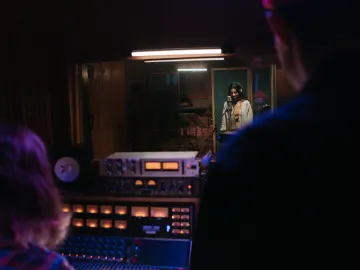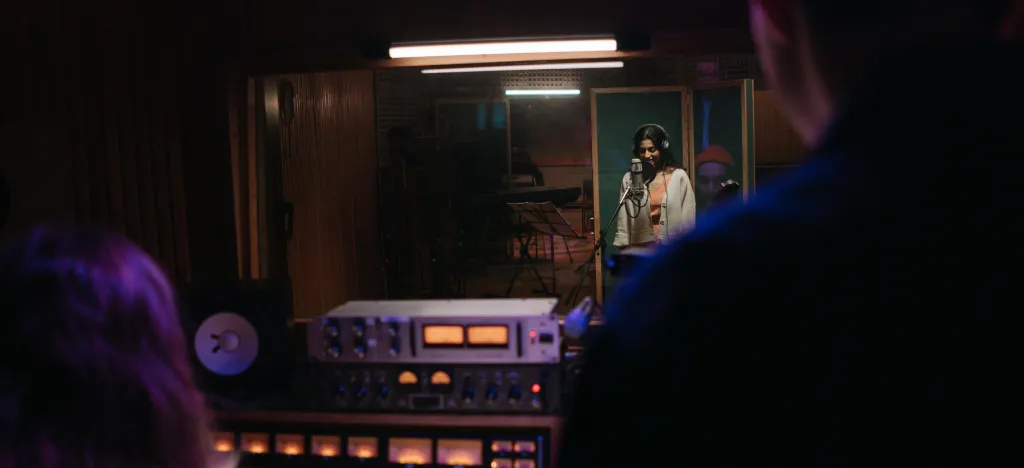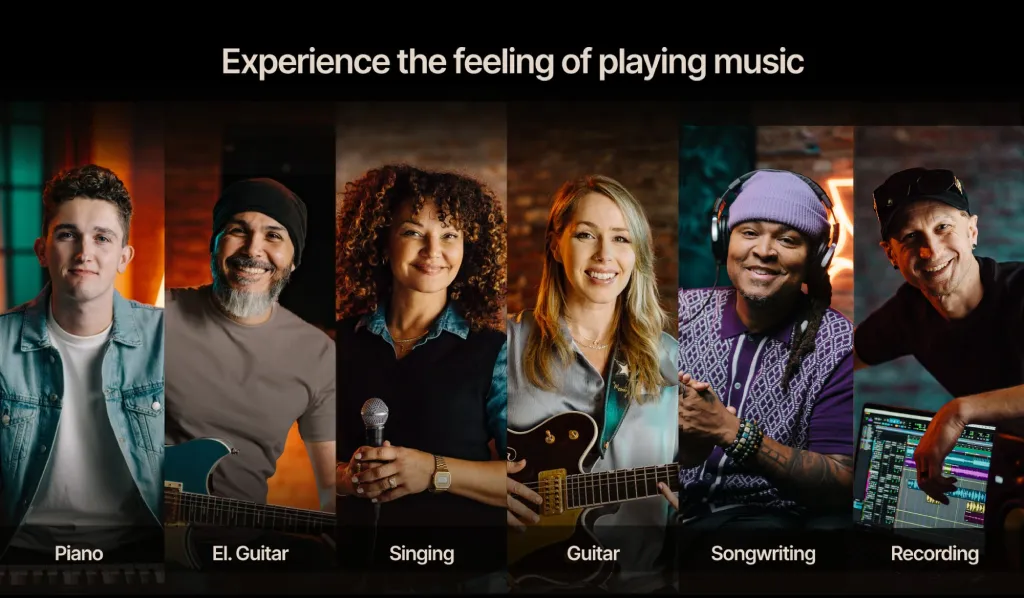The music industry: vibrant, creative, and full of boundary-pushing ideas. But scratch beneath the surface of iconic performances and chart-topping hits, and you’ll find a glaring imbalance. For each groundbreaking female artist in the spotlight, the number of women calling the shots behind the scenes—as producers, engineers, or executives—is painfully small.
I first experienced this disparity when I studied sound engineering and music technology. Out of around 25 students, only five were women, and there were no female instructors at all. So, why does this gap still exist? Let’s unpack the numbers, bust some myths, and explore how we can create an industry that works for everyone.
- Statistics on gender inequality in the music industry
- A history of exclusion in music
- How gender stereotypes limit opportunities in music
- Spotlight: Arianna Powell
- The 'Boys’ Club' of the music industry
- Harassment and gatekeeping in music
- Biology isn’t the problem
- Gender pay gap in the music industry
- How women are changing the music industry
- Spotlight: Stevvi Alexander
- How to close the gender gap in music?
- Why closing the gender gap in music matters
Statistics on gender inequality in the music industry
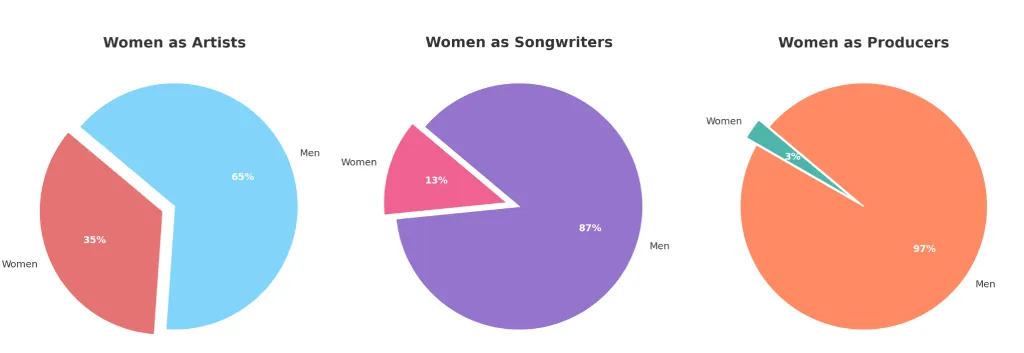 Let’s start by looking at some of the numbers. Although in 2023, women made up 35% of Billboard Hot 100 artists—a 12-year high—behind the scenes, the disparity was glaring: just 12.7% of songwriters and 2.8% of music producers were women (USC Annenberg Inclusion Initiative). Put another way, women in the U.S. are statistically three times more likely to become firefighters than to become music producers.
Let’s start by looking at some of the numbers. Although in 2023, women made up 35% of Billboard Hot 100 artists—a 12-year high—behind the scenes, the disparity was glaring: just 12.7% of songwriters and 2.8% of music producers were women (USC Annenberg Inclusion Initiative). Put another way, women in the U.S. are statistically three times more likely to become firefighters than to become music producers.
In bands, 24% of members are women, more often as vocalists or bassists, while men dominate instrumental roles like guitarists and drummers. Live music also reflects this imbalance. Globally, women made up only 19% of festival line-ups, with female DJs at electronic festivals hitting just 2.7% to 9.6% (Counting the Music Industry, 2019). When it comes to orchestras, women do now make up 47% of U.S. orchestra musicians (up from 38% in 1978), yet only 1 in 9 music directors are women.
Leadership roles reveal the same trend. In the UK, men hold 82% of CEO positions at music publishing companies, showing just how skewed the power structure remains. In short, whether you’re looking at the stage, the studio, or the boardroom, women still encounter widespread barriers.
A history of exclusion in music
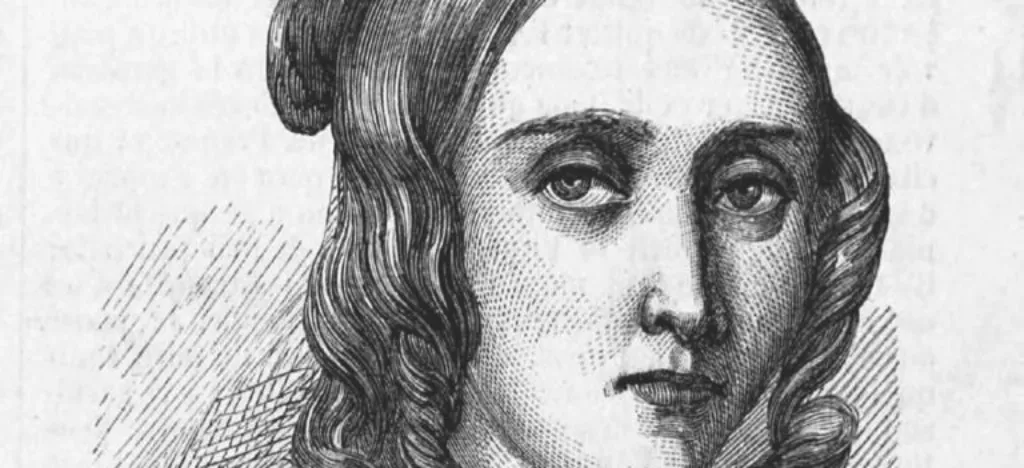 The underrepresentation of women in music has roots that stretch back centuries. In ancient Greece, women weren’t allowed to perform publicly and were relegated to private or religious roles. By the 19th century, female composers like Louise Farrenc faced severe obstacles, often having their work dismissed despite its brilliance.
The underrepresentation of women in music has roots that stretch back centuries. In ancient Greece, women weren’t allowed to perform publicly and were relegated to private or religious roles. By the 19th century, female composers like Louise Farrenc faced severe obstacles, often having their work dismissed despite its brilliance.
When popular music took off in the 20th century, more women like Billie Holiday and Madonna gained visibility on stage, shattering some performance barriers. But the “male domain” of behind-the-scenes roles—producers, engineers, and executives—remained stubbornly closed off. Even though women began excelling as performers, the industry still undervalued their work in composition and leadership. Those old power dynamics continue to echo through the music world today.
How gender stereotypes limit opportunities in music
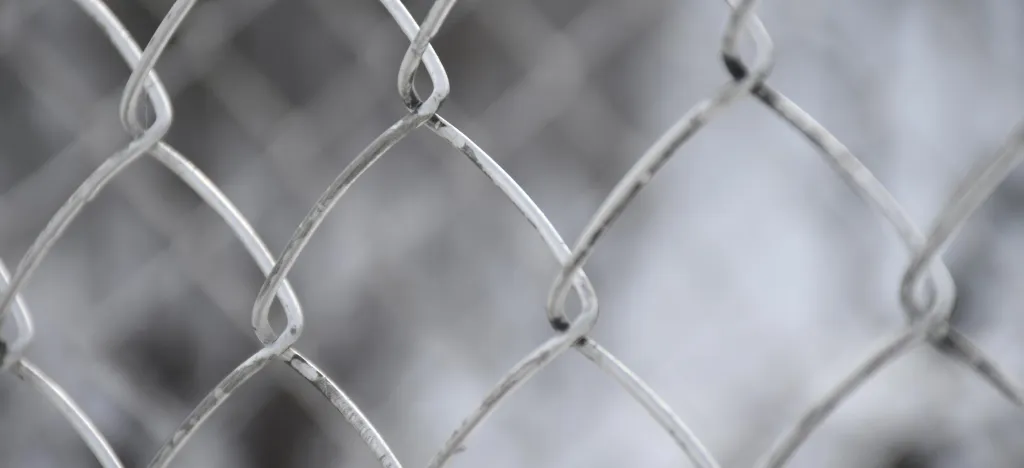 From childhood, boys and girls often get pushed toward different instruments. Boys might be steered toward guitars or drums—“cool” instruments—while girls are encouraged to pick up flutes or violins, seen as more “feminine.” As Dua Lipa has noted, women who don’t fit these expectations often face extra scrutiny.
From childhood, boys and girls often get pushed toward different instruments. Boys might be steered toward guitars or drums—“cool” instruments—while girls are encouraged to pick up flutes or violins, seen as more “feminine.” As Dua Lipa has noted, women who don’t fit these expectations often face extra scrutiny.
Inside recording studios, these stereotypes still linger. Men are typically seen as producers or engineers, while women get mistaken for vocalists or assistants. It’s an everyday bias that discourages many women from technical roles. And since there aren’t many high-profile female producers, guitarists, or engineers, it’s tough for young girls to picture themselves in similar careers.
Shattering these assumptions isn’t just about fairness—it’s about bringing fresh perspectives that could reshape what modern music sounds like.
Spotlight: Arianna Powell
One musician actively breaking these molds is Arianna Powell, a session guitarist and teacher who has worked with big names like Dua Lipa, Nick Jonas, Halsey, Chris Brown, and the Black Eyed Peas. In a recent interview, she put it plainly:
“I can’t wait for the day that all-girl bands aren’t hired because they’re women, but because they’re simply great musicians. We’re moving in that direction, but it’s still a work in progress.”
Arianna’s story proves women can excel in roles traditionally labelled “male,” like lead guitar. By showcasing her talent on the global stage, she helps erase the notion that women aren’t cut out for the technical or instrumental side of the industry.
The 'Boys’ Club' of the music industry
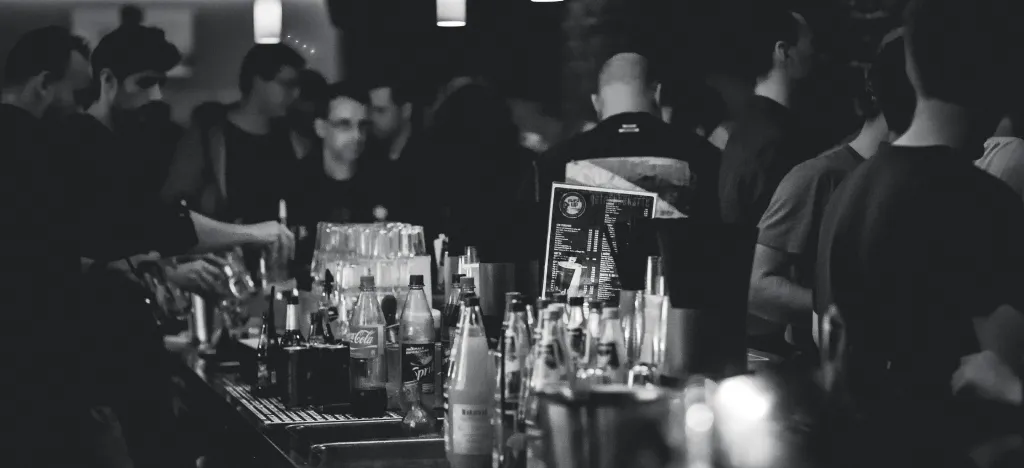 Success in music isn’t just about raw talent; it’s also about who you know. Deals happen during late-night studio sessions, afterparties, or exclusive industry hangouts, places that can feel unwelcoming—or even unsafe—for women.
Success in music isn’t just about raw talent; it’s also about who you know. Deals happen during late-night studio sessions, afterparties, or exclusive industry hangouts, places that can feel unwelcoming—or even unsafe—for women.
And when women do break into these spaces, they’re often held to different standards. Men who ask for guidance are mentored; women are more likely to be dismissed or condescended to. It’s not just frustrating—it drains energy and kills careers.
If we want an innovative and dynamic music industry, we need to dismantle these exclusive, male-centric “boys’ club” networks. Talent should open doors, not gender.
Harassment and gatekeeping in music
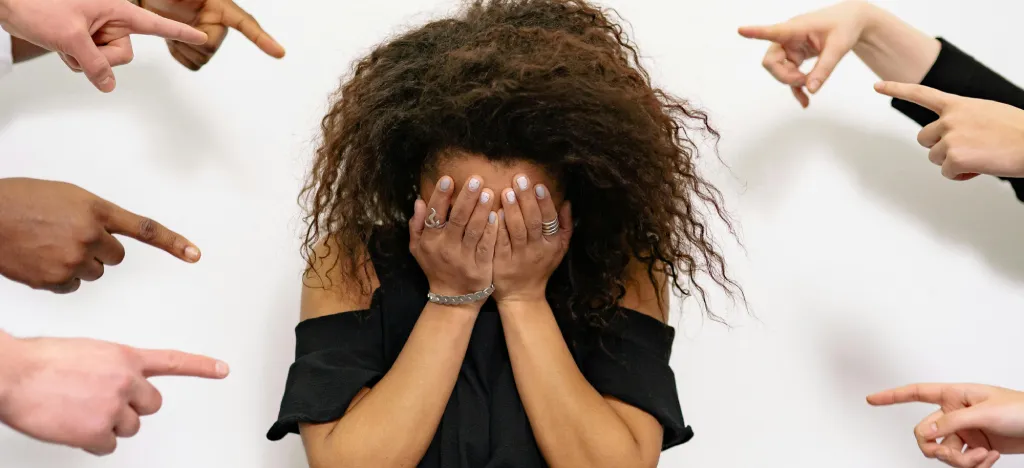 Harassment is a long-standing problem in the music industry. According to some surveys, 64% of women in music have faced harassment or objectification, and 65% say they’ve missed out on professional opportunities after refusing romantic advances. Stories of being invited to “jam sessions” with ulterior motives are far too common.
Harassment is a long-standing problem in the music industry. According to some surveys, 64% of women in music have faced harassment or objectification, and 65% say they’ve missed out on professional opportunities after refusing romantic advances. Stories of being invited to “jam sessions” with ulterior motives are far too common.
Online platforms, while offering visibility, have also become breeding grounds for abuse. Nearly half of female musicians in the UK have reported harassment, including trolling and inappropriate comments (Musicians’ Union). Gatekeeping only adds insult to injury: women’s skills and achievements often come under more scrutiny than men’s. The result? Women get discouraged and, in many cases, blocked from opportunities that help build long-term careers.
Biology isn’t the problem
 There’s a really persistent myth—popularized by books like Men Are from Mars, Women Are from Venus—that men are naturally wired for technical roles, while women are more “empathetic.” Modern science debunks this idea. A comprehensive review in Neuroscience & Biobehavioral Reviews highlights that differences in male and female brains are minimal and often influenced by societal factors rather than biology. Neuroscientist Gina Rippon, author of The Gendered Brain, reinforces this view, arguing that perceived differences are largely socially constructed and not biologically inherent. These findings challenge the outdated narrative that women are less suited for technical roles.
There’s a really persistent myth—popularized by books like Men Are from Mars, Women Are from Venus—that men are naturally wired for technical roles, while women are more “empathetic.” Modern science debunks this idea. A comprehensive review in Neuroscience & Biobehavioral Reviews highlights that differences in male and female brains are minimal and often influenced by societal factors rather than biology. Neuroscientist Gina Rippon, author of The Gendered Brain, reinforces this view, arguing that perceived differences are largely socially constructed and not biologically inherent. These findings challenge the outdated narrative that women are less suited for technical roles.
The real barriers are stereotypes, a lack of visible role models, and insufficient mentorship. Talent and ability have no gender—it's time the music industry reflected that.
Gender pay gap in the music industry
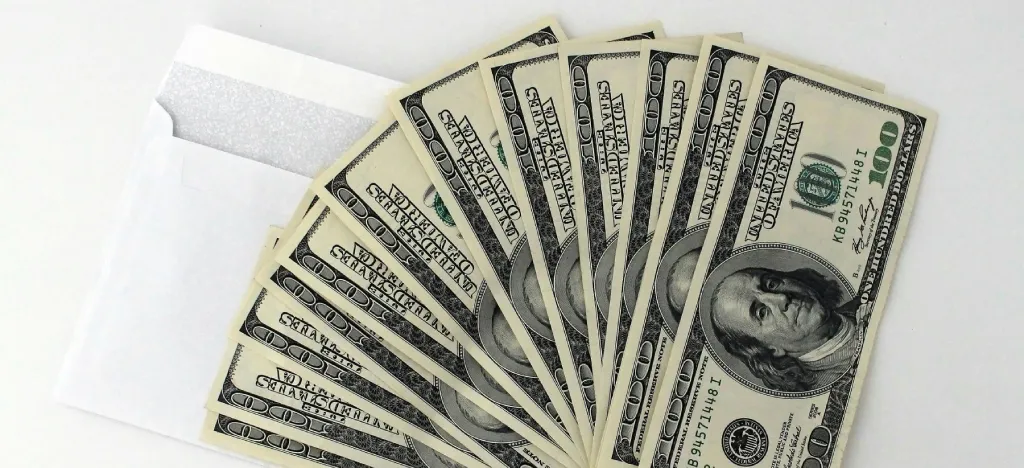 The gender pay gap is another glaring reflection of inequality. In the United States, women in the arts earn a median salary of $45,156, compared to $60,497 for men. That’s a difference of more than $15,000. Women earn roughly 70 cents for every dollar men make—similar to the UK, where women earn 67p for every £1 earned by men.
The gender pay gap is another glaring reflection of inequality. In the United States, women in the arts earn a median salary of $45,156, compared to $60,497 for men. That’s a difference of more than $15,000. Women earn roughly 70 cents for every dollar men make—similar to the UK, where women earn 67p for every £1 earned by men.
Bonuses further amplify this disparity: women reportedly get 88% less in bonus pay for comparable achievements (PRS Foundation). Meanwhile, 80% of top executive jobs in music publishing and record labels still go to men. Closing this gap isn’t just a fairness issue; the industry misses out on the benefits of diverse leadership and fresh ideas when women’s financial worth isn’t properly recognized.
How women are changing the music industry
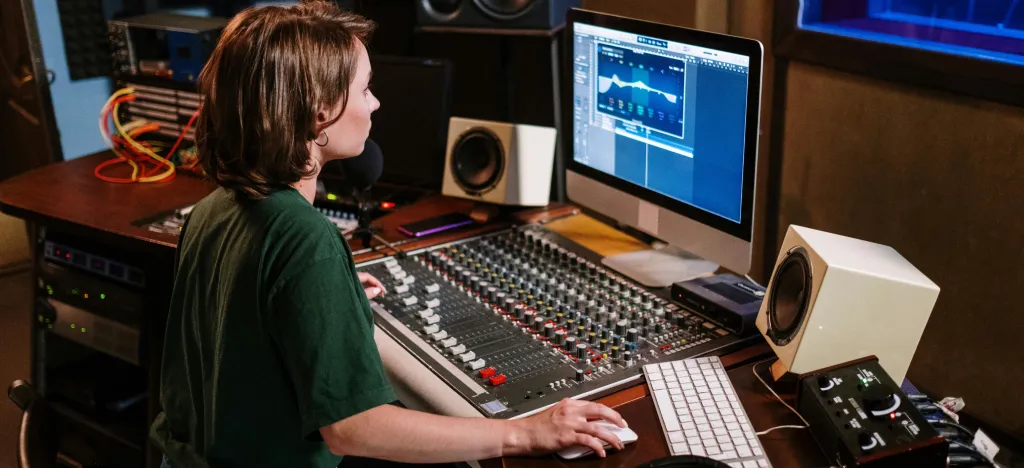 Despite these bleak stats, there are uplifting signs of progress:
Despite these bleak stats, there are uplifting signs of progress:
Initiatives making a difference: Sweden’s Equalizer Project and the Women in the Mix program are pushing for more female producers and offering mentorship to those just starting out.
Progress on festival stages: Events like Primavera Sound have pledged to book gender-balanced line-ups.
Artists driving change: Taylor Swift took control of her music catalogue, challenging the status quo. Beyoncé and Billie Eilish also advocate for greater equity and use their massive platforms to spotlight inequalities.
Creating safe spaces: Groups like She Is The Music and Girls Make Beats offer supportive communities, while Girls Rock Camps provide hands-on experience and confidence-building for young women.
Representation in leadership: Forward-thinking companies are recognizing that diverse teams boost both creativity and profits, leading to more inclusive hiring practices.
Spotlight: Stevvi Alexander
Another artist forging her own path is vocalist Stevvi Alexander, who’s performed with icons like Fleetwood Mac and Barbra Streisand. She once suggested a simple idea called “Family Dinner”:
“It involves people of various backgrounds sitting down to share a meal… to start a dialogue.”
She also pointed out the danger in drawing hard lines between “us” and “them,” which only fuels division. Stevvi’s focus on genuine human connection is a powerful reminder that building real relationships can break down gatekeeping—and bring more people, especially women, into the fold.
How to close the gender gap in music?
If you’ve ever wondered how to help close the gender gap in the music industry, here are some actionable steps:
Support women in music: Stream their songs, buy their albums, and share their work.
Challenge stereotypes: Celebrate women who shine in every role, from sound engineering to leadership.
Demand representation: Push for diverse line-ups at festivals, more inclusive hiring in studios, and equitable leadership in executive offices.
Foster safe workspaces: Advocate for policies that prevent harassment and discrimination.
Support mentorship programs: Get involved with or donate to groups like She Is The Music and Girls Rock Camps.
Hold the industry accountable: Call out inequality—sign petitions, organize events, and back campaigns that demand better.
Educate and advocate: Encourage music education programs that introduce girls to technical and creative paths early on.
Why closing the gender gap in music matters
Music should belong to everyone. When we remove the barriers facing women, we unleash an incredible well of talent, perspective, and innovation. A more inclusive music industry doesn’t just do right by half the population—it enriches the entire field with new voices and fresh ideas.
So, will we ever see a music landscape where gender doesn’t hold people back? Absolutely. It’s just a matter of when. And the more we push for change—together—the sooner that day will come.
